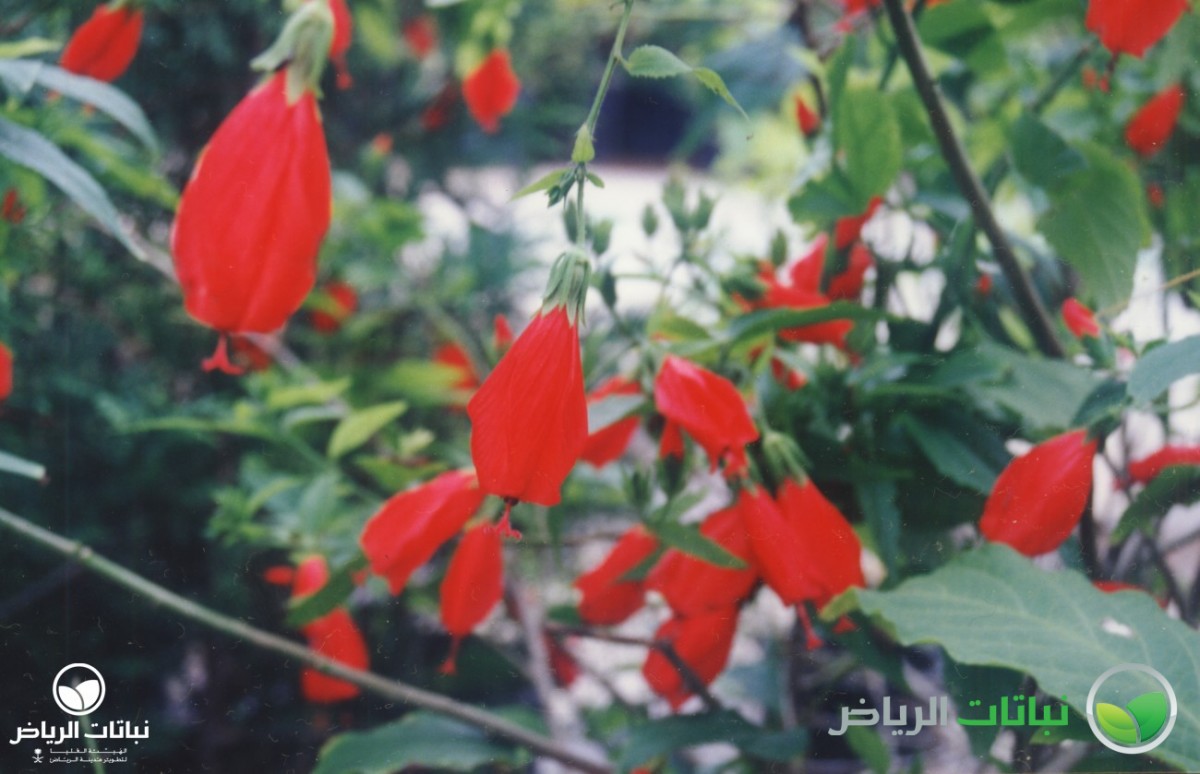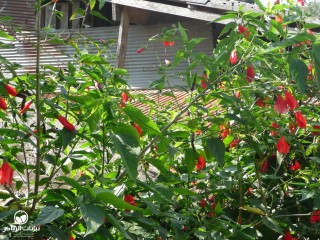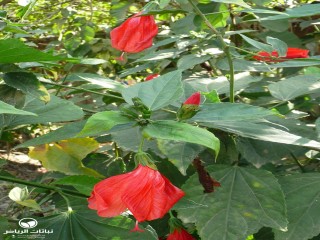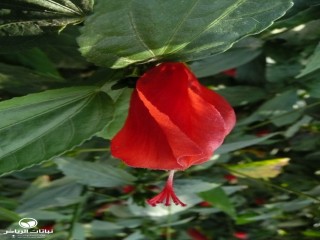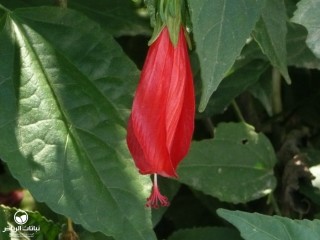Riyadh Plants
Wax Mallow, Turk’s Cap
Known as Wax Mallow or Turk’s Cap, this shrub spread from Central America across all warm climates, and is grown in containers where winters are cold. It grows at moderate speed to form a round shrub some 2 metres across, eventually reaching double this size if conditions are ideal. Wax Mallows resemble low Chinese Hibiscus, except for their flowers that seem to remain closed, giving them the other common name Sleeping Hibiscus. The protruding carpel is cloaked by bright red petals forming tubular flowers from spring until late autumn. Seeds develop in inconspicuous capsules and may be used for propagation. Much more common are softwood cuttings to multiply the shrub. The evergreen leaves are trilobed with a serrate margin. Usually bright green, they immediately indicate malnutrition such as alkaline soil by turning yellow. Fertile, well-drained soil with frequent irrigation allows locations in full sun, but this shrub also thrives in partial shade. It takes pruning to achieve a neat appearance and readily regenerates after severe cutting back. Pinching the branches during the growing season encourages compact growth and the production of flowers. Low temperatures are tolerated without any damage. Wax Mallows are reliable shrubs in small gardens and pedestrian precincts, and are often seen in Arriyadh in mixed shrub borders. They may grow in groups or as a flowering hedge in open ground or in containers. Copious amounts of flowers are produced, but also litter, demanding an appropriate location or frequent cleaning.
